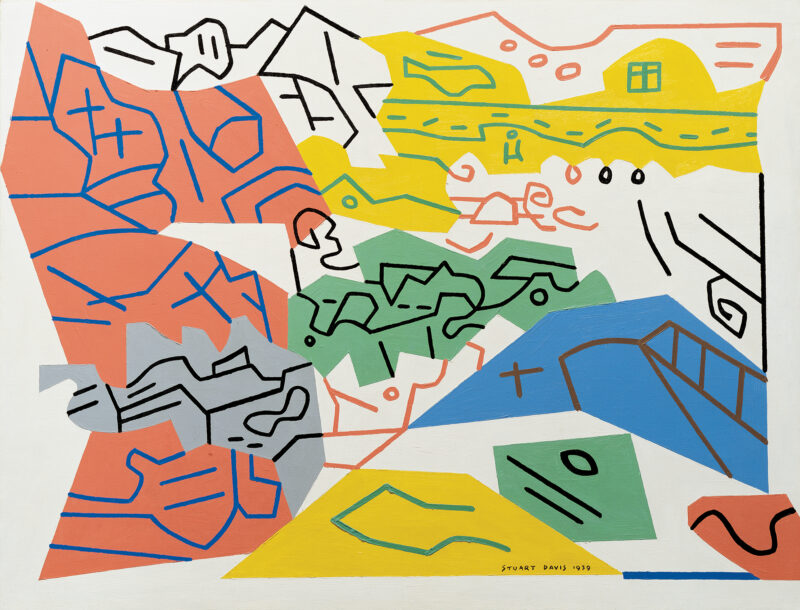
Bass Rocks #1
Davis, Stuart
1939
Artwork Information
-
Title:
Bass Rocks #1
-
Artist:
Davis, Stuart
-
Artist Bio:
American, 1892–1964
-
Date:
1939
-
Medium:
Oil on canvas
-
Dimensions:
34 3/8 x 43 1/8 in.
-
Credit Line:
Wichita Art Museum, Roland P. Murdock Collection
-
Object Number:
M49.44
-
Display:
Not Currently on Display
About the Artwork
Stuart Davis created a hard edge abstract style richly flavored by allusions to the idiomatic accents of urban American life. He readily proclaimed his debts to European modernists Picasso, Léger, and Miro as he deplored the narrow literalness of the American regionalist and American scene schools. Yet Davis was as eager as his teacher Robert Henri to mold a “rigorously logically American” artistic identity from the sensations of contemporary life. He proceeded with almost plodding deliberateness to reduce visual reality to a plastic reality of line and color shapes, then, with these means in hand, turned his art to an interpretation of the emotive tone of specific American locales, and the distinctive rhythm of street lights, billboards, and jazz music.
Bass Rocks #1 is a pivotal work in Davis’ career. It marks his renewed devotion to creating a personal vision and the beginning of the work that was to become his signature style of syncopated lines and idiosyncratic color/shape combinations. He had just completed six years of work on a series of public murals commissioned by the Federal Art Project and the Works Progress Administration in New York and he declared, “… I hired myself a studio and devoted myself to painting. I felt it was ‘now or never.’ I made Bass Rocks.” Davis developed the composition of Bass Rocks #1 from direct observation of a section of rugged Atlantic coastline between Gloucester and Cape Ann, Massachusetts, the area where he and his family summered every year.
Davis’s initial conception of Bass Rocks #1’s cool, crisp, brilliantly lit space, recorded in the small sketchbook that he carried on his walks, shows that the artist started the image thinking more like a composer than like a camera. Within the uniformly thick calligraphic black lines of his sketch, Davis translated a seashore view comprised of craggy boulders in the foreground, a stretch of beach in middle ground, and water in the distance into funky rhythmic patterns—patches of squiggly lines, of densely grouped angular lines and a row of small wavy lines against a blank ground. Davis subdued and quieted the busyness of the sketch for the large oil composition by subtracting line motifs, distilling the movement to fewer lines set against large areas of uniform color. His hues, except for the gray and the high key yellow, are quirky individual mixes of red, blue, and green. When a line invades one of the flat shapes, reminiscent of odd puzzle pieces, it changes color. A white ground dominates the color scheme and functions not as background but as positive space. From the interaction of these simple yet distinctive formal elements Bass Rocks #1 evokes a sense of openness and animation, as of an exhilarating intake of breath, held for a moment.